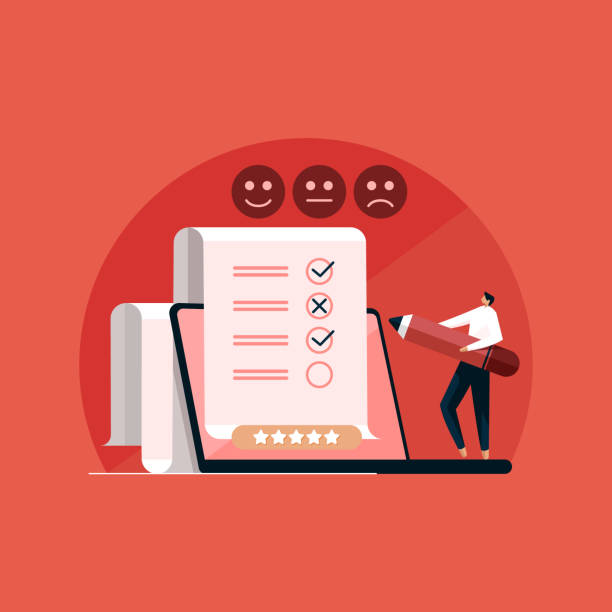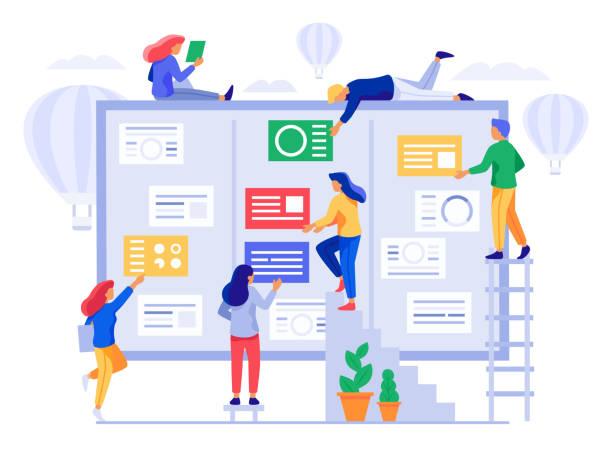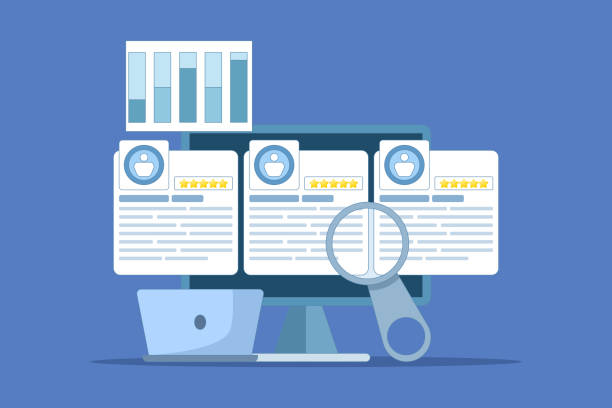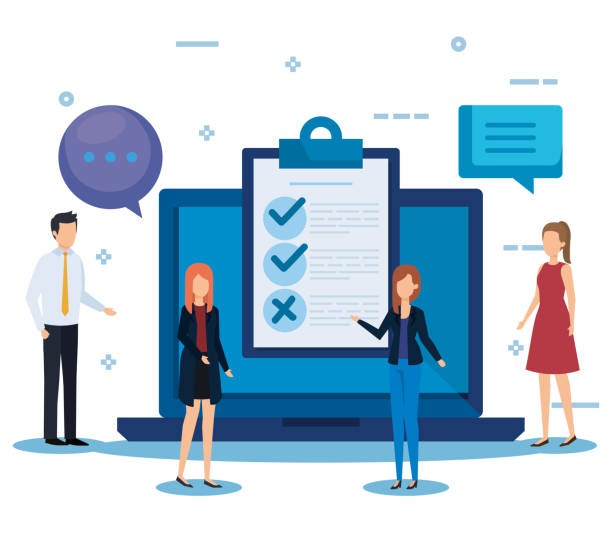Introduction to the Importance of Personal Website Design

In today’s digital age, having a powerful #online_presence is no longer an option, but a necessity.
Therefore, personal website design has become a key tool for professionals, artists, freelancers, and anyone looking to build a reputable personal brand.
This website not only serves as an #online_portfolio showcasing your capabilities and projects but also provides an exclusive space for your voice to reach audiences and share your unique perspectives.
Unlike social media platforms that have their own rules and limitations, a personal website gives you complete control over content, design, and visitor interaction.
This highlights the importance of digital independence and customization.
A personal website offers an opportunity to tell your story in a way no other platform can.
This dedicated space allows you to showcase your expertise in a deep and organized manner, from specialized articles to image galleries and educational videos.
Furthermore, a personal website acts as a hub for driving traffic from various sources, whether through Search Engine Optimization (SEO) or through referral links from social profiles.
In summary, this investment in building your online identity provides a solid foundation for professional growth and achieving long-term goals.
It is a fundamental step in branding and establishing your position in the digital world.
How much does losing business leads due to an unprofessional site cost you? Solve this problem forever with professional corporate website design by Rasav Web!
✅ Increase credibility and trust of potential customers
✅ Easier attraction of new business leads
⚡ Get a free consultation now!
Defining the Purpose and Audience for Your Personal Website Design
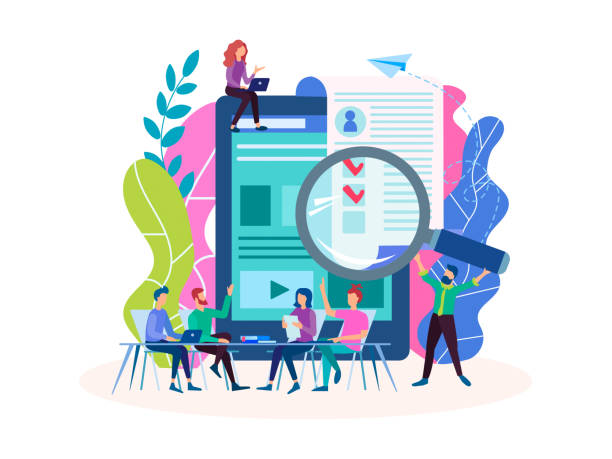
Before commencing any practical steps for personal website design, the most crucial step is to clarify your purpose and precisely identify your target audience.
Without these two vital elements, your website may lose its way and fail to convey the right message to the right people.
A fundamental provocative question is: “Why do I need this website?” Is your goal to display a portfolio, sell services, share knowledge, or build a virtual community? Each of these goals requires a different approach in website design, content, and structure.
For instance, an artist needs a high-quality image gallery and attractive visual design to showcase their work, while a consultant might focus on providing specialized articles and contact forms.
After defining the purpose, it’s time to identify the audience.
This specialized phase involves answering questions such as: “Who is my ideal audience?”, “What information do they need?”, and “How can my website solve their problems?”
Understanding the demographics, interests, needs, and even the language used by your audience helps you create appropriate content and user-friendly design.
This guidance is crucial for shaping the entire personal website development project.
With a clear understanding of your purpose and audience, you can formulate an effective content strategy from the outset, optimize the website’s navigation structure, and choose a visual design that is not only appealing but also effectively conveys your message.
These initial steps ensure that your investment in building an effective online portfolio yields desired results.
Choosing the Right Platform and Hosting for Personal Website Design

One of the most important decisions in the journey of personal website design is choosing the right platform and reliable hosting services.
This educational and explanatory decision directly impacts the speed, security, scalability, and ease of managing your website.
Website building platforms are divided into two main categories: Content Management Systems (CMS) like WordPress, Joomla, and Drupal, and Website Builders like Wix, Squarespace, and Weebly.
| Feature | Content Management System (CMS) | Website Builder |
|---|---|---|
| Flexibility and Customization | High (requires more technical knowledge) | Medium to Low (dependent on templates) |
| Ease of Use | Medium (requires initial learning) | High (drag and drop) |
| Hosting Control | Full (independent hosting choice) | Limited (provided by the platform) |
| Cost | Variable (hosting + theme/plugin) | Usually Affordable (includes hosting) |
Alongside the platform, choosing hosting services is also of great importance.
Hosting refers to the location where your website files are stored and made accessible via the internet.
There are various types of hosting, including shared hosting, VPS, and cloud hosting.
For most personal websites starting out, shared hosting or managed WordPress hosting are affordable and sufficient options.
When choosing hosting, pay attention to factors such as loading speed, security (including a free SSL certificate), customer support, and future scalability.
Quality hosting ensures your website is always accessible and performs optimally, which directly impacts user experience and your search engine ranking.
These fundamental choices form the cornerstone of any successful personal website creation project.
The Role of UI/UX in Attractive Personal Website Design

When it comes to personal website design, two concepts, UI (User Interface) and UX (User Experience), play pivotal roles.
These two factors are inextricably linked and will determine the attractiveness and effectiveness of your website for visitors.
A successful design should not only be visually #beautiful and #harmonious but also function in a way that allows visitors to easily find the information they need and interact with the site.
UI refers to the website’s appearance, including colors, fonts, images, layout, and buttons.
The primary goal of UI is to create a pleasant and intuitive visual experience that attracts and engages the visitor.
Choosing an appropriate color palette, readable fonts, and effectively using white space all contribute to improving the overall look and feel of the website.
On the other hand, UX addresses the visitor’s entire experience when using the website.
This includes ease of navigation, page loading speed, information accessibility, and whether the visitor has achieved their goal in visiting the site.
Good UX guides the visitor along a logical and hassle-free path.
This analytical and specialized section emphasizes the importance of understanding user psychology and online behavior.
Factors such as responsive design, which optimizes the website for display on various devices like mobile, tablet, and desktop, and page loading speed, which directly impacts visitor retention, all fall under UX.
A personal website with beautiful UI but poor UX quickly loses its users.
Therefore, in the process of personal website development, both aspects must be considered simultaneously and with high precision to ensure that the website not only looks good but also performs excellently and helps you achieve your goals.
Does your current corporate website present a worthy image of your brand and attract new customers?
If not, transform this challenge into an opportunity with Rasav Web’s professional corporate website design services.
✅ Significantly improves your brand’s credibility and image.
✅ Smoothens the path for attracting new leads and customers.
⚡ For a free and specialized consultation, contact Rasav Web now!
Creating Powerful Content for a Personal Website
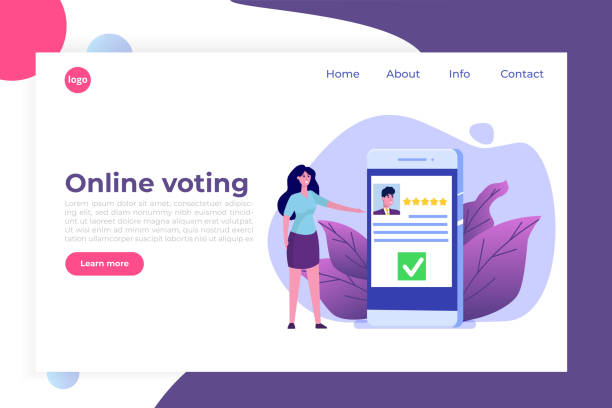
Content is #king of every website, and this principle fully applies to personal website design.
It is your content that tells your story, showcases your expertise, and converts visitors into customers or loyal followers.
Creating powerful, #unique, and #engaging content is an art that requires meticulous planning and a deep understanding of the audience.
Various types of content can be included on a personal website:
- Blog Articles: For sharing knowledge, insights, and news related to your field.
This type of content can be highly thought-provoking or specialized. - Portfolio or Work Samples: For showcasing projects, designs, writings, or any other creative work.
This section should include high-quality images and comprehensive descriptions. - Biography or About Me: An engaging story of your professional and personal journey, introducing visitors to you.
- Services/Products Description: If you offer services or sell products, a comprehensive and convincing explanation of them.
- Videos and Podcasts: For providing multimedia content that can be highly entertaining and educational.
Content quality matters more than quantity.
Your content should be valuable, accurate, and trustworthy.
For SEO improvement, using relevant keywords in the content is crucial, but it should be done naturally and smoothly to avoid compromising readability.
Also, update your content regularly to maintain its freshness and relevance.
This commitment to continuous content creation not only helps your search engine ranking but also encourages visitors to return to your site.
Ultimately, your content should reflect your personality and brand, making it a powerful tool for personal branding.
SEO Optimization for Personal Website Visibility
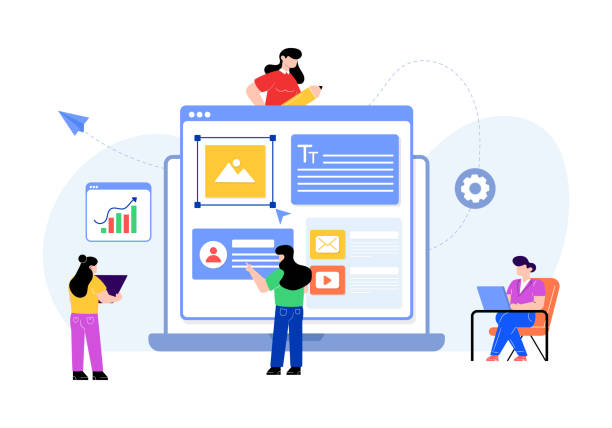
After completing personal website design, the next step is to ensure that your website is visible and rankable for search engines like Google.
This is where Search Engine Optimization (SEO) comes into play.
#SEO is an educational and #continuous process that helps your website rank higher in search results for keywords relevant to your field.
SEO principles can be divided into two main categories: On-Page SEO and Off-Page SEO.
On-Page SEO includes all actions you can take within your website.
These include keyword research and strategically using them in titles, subheadings, main text, meta descriptions, and URL addresses.
Additionally, image optimization (using Alt tags), creating high-quality and unique content, improving page loading speed, and ensuring responsive design for mobile are other important aspects of on-page SEO.
Internal linking (linking to other pages within your website) also helps search engines better understand your website’s structure.
Off-Page SEO refers to activities performed outside your website to increase your domain’s credibility and authority.
The most important factor in off-page SEO is backlinks – links from other websites that point to your site.
High-quality backlinks from reputable websites send a strong signal to search engines that your content is valuable and trustworthy.
Participating in online forums, guest blogging, and social media activity can also help increase the visibility and credibility of your personal website.
By correctly implementing these SEO strategies, you can ensure that your online portfolio reaches a wider audience and your digital impact increases.
Personal Website Security and Maintenance

After designing your personal website and publishing it, your work is not over.
In fact, a significant part of managing a successful website is ensuring its security and regular maintenance.
#Cybersecurity is an ongoing concern, and any website, regardless of its size, can be a target for malicious attacks.
Regular maintenance is also essential for maintaining optimal performance, high speed, and a desirable user experience.
This specialized and informative section helps you protect your website against threats and keep it up-to-date.
| Action | Description | Frequency |
|---|---|---|
| Regular Backups | Storing website files and database in a secure location | Weekly/Monthly (depending on content changes) |
| Software Updates | CMS platform, themes, plugins | As soon as updates are released |
| SSL Certificate | Data encryption and HTTPS display (SEO importance) | Mandatory, one-time setup and annual renewal |
| Check for Broken Links | Finding and fixing links that do not point to an existing page | Monthly/Quarterly |
| Database Optimization | Removing redundant information and optimizing access speed | Quarterly |
Using strong and unique passwords, enabling two-factor authentication (2FA), and installing a Web Application Firewall (WAF) are also vital security measures.
Also, continuously review your website’s security reports and errors to identify and resolve any suspicious activity.
Regular maintenance not only contributes to your website’s stability but also positively impacts your user experience and SEO ranking.
A slow or vulnerable website can lead to loss of visitors and a decrease in your online credibility.
Therefore, dedicating time and resources to security and maintenance is an essential investment to preserve and enhance your personal digital presence.
Using Social Media to Promote Your Personal Website
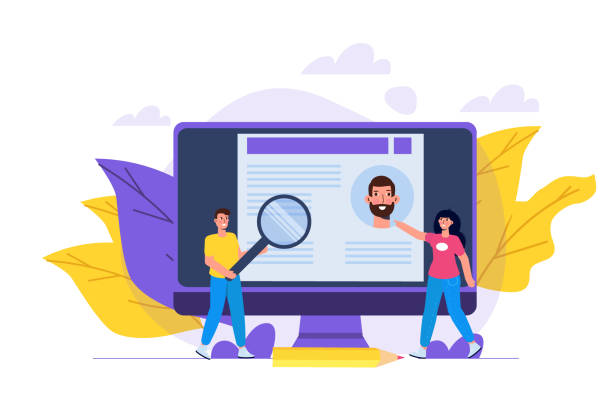
In today’s world, personal website design alone is not enough; it must be complemented with digital marketing strategies, especially the use of social media.
Social networks are #powerful platforms that can drive significant traffic to your website, strengthen your personal brand, and establish direct communication with your audience.
This section is a comprehensive guide to maximizing the synergy between your personal website and your social media presence.
First, identify social platforms relevant to your audience and field of work.
If your website is an artistic portfolio, Instagram and Pinterest can be very effective.
For professionals and consultants, LinkedIn and Twitter (X) are better options.
After choosing the platforms, place your website link in your bio or profile so visitors can easily access it.
Share your website content on social media.
Whenever you publish a new blog article, add a new project to your portfolio, or offer a new service, promote it on social platforms.
Use #engaging_images and #short, entertaining_texts to encourage users to click on your website link.
Also, you can use Story and Reels features to show behind-the-scenes of your work or provide quick and engaging content.
Interacting with followers is also very important.
Respond to comments and messages, participate in discussions, and leverage User-Generated Content whenever possible.
These interactions not only help grow your virtual community but also enhance your credibility.
Smart use of social media helps you not only increase your website traffic but also establish deeper connections with your audience and expand your personal brand in the digital world.
This is a vital strategy for the online growth of your personal portfolio.
Do you dream of a thriving online store but don’t know where to start?
Rasav Web is your comprehensive e-commerce website design solution.
✅ Attractive and user-friendly design
✅ Increased sales and revenue⚡ Get a free consultation
Monitoring and Analyzing Personal Website Performance
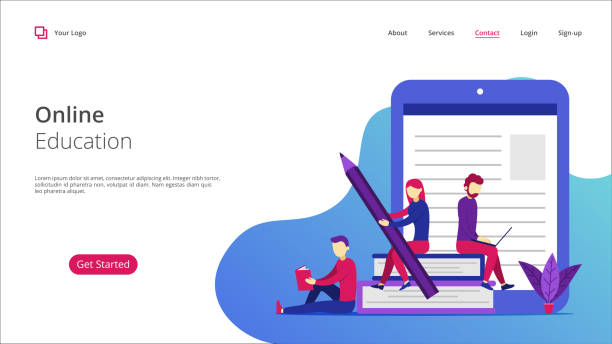
After personal website design and its launch, the next critical stage is monitoring and analyzing its performance.
Without data and analytical insights, you cannot measure the effectiveness of your efforts and identify opportunities for improvement.
#Web_analytics is an analytical and educational tool that helps you understand visitor behavior, traffic sources, and the popularity of your content.
The most important tool for this purpose is Google Analytics, which provides very comprehensive information for free.
Using Google Analytics, you can examine the following key metrics:
- Number of Visitors: How many users have visited your website?
- Traffic Sources: Where do your visitors come from? (Organic search, social media, referral, direct)
- Most Visited Pages: Which pages on your website are most popular?
- Time on Page: How long do users typically stay on your site?
- Bounce Rate: What percentage of users leave the site after viewing only one page?
- Visitor Demographics: Demographic information and interests of your visitors.
By regularly reviewing these metrics, you can identify your website’s strengths and weaknesses.
For example, if the bounce rate for a specific page is high, you might need to revise that page’s content or design.
If traffic from a particular channel is low, you can strengthen your marketing strategy in that channel.
This data allows you to make informed decisions to improve your personal website’s effectiveness.
Additionally, other tools like Google Search Console provide valuable information about SEO performance, keywords through which you appear in searches, and potential website crawling issues.
Continuous monitoring and analysis provide a vital feedback loop that allows you to constantly improve your website and get closer to your goals.
Challenges and Solutions for Personal Website Design

Although personal website design offers numerous benefits, this path is not without challenges.
Recognizing these obstacles and preparing to tackle them will help you have a smoother and more effective process.
This thought-provoking and explanatory section examines some of the most common challenges and provides practical solutions for them.
- Challenge of Time and Expertise: Many individuals abandon building their website due to work commitments or lack of sufficient technical knowledge.
Solution: Use user-friendly website builders (like Wix or Squarespace) that require no coding, or hire a web developer for technical tasks.
Also, there are plenty of online educational resources for learning the basics. - Challenge of Continuous Content Creation: Maintaining the freshness and dynamism of a website requires regularly producing new and high-quality content.
Solution: Plan a content calendar, repurpose old content into new formats (e.g., converting an article into an infographic or video), and focus on topics you are genuinely interested in and specialized in.
- Challenge of Search Engine Visibility: Competing for high rankings in search results is difficult.
Solution: Invest in SEO, use long-tail keywords, and promote your website on social media and other platforms.
- Challenge of Security: Websites are always at risk of cyberattacks.
Solution: Choose a reputable hosting provider, install an SSL certificate, regularly update the platform and plugins, and use strong passwords.
- Challenge of Maintaining Motivation: You might lose motivation to maintain your website over time.
Solution: Set small, achievable goals, track progress, and remind yourself of the long-term benefits of having a strong digital portfolio.
With a strategic and flexible approach, you can overcome these challenges and leverage the full potential of your personal website.
Frequently Asked Questions
| Question | Answer |
|---|---|
| Why should we have a personal website? | A personal website helps you build your personal brand, showcase your skills and portfolio, connect with your audience, and gain new career opportunities. |
| What steps should be taken to design a personal website? | The steps include defining the purpose, choosing a domain name and hosting, selecting a platform (e.g., WordPress), designing the user interface, content creation, search engine optimization (SEO), and launching. |
| Do I necessarily need to know coding to design a personal website? | No, using Content Management Systems (CMS) like WordPress or Website Builders like Wix and Squarespace, you can design your website without needing to code. |
| What is a Domain Name and how do I choose it? | A domain name is your website’s address on the internet (e.g., yourname.com). It’s best to choose a name that is short, memorable, relevant to you or your business, and has an appropriate extension (like .com, .ir). |
| What is Hosting and why do I need it? | Hosting is a space on the internet where all your website files and information (such as images, texts, codes) are stored so they are always accessible to users. Without hosting, your website will not be visible. |
| What should a personal website’s content include? | Content usually includes an About Me page, portfolio, services/skills, a blog (articles), contact information, and a contact form. |
| How can I optimize my personal website for search engines (SEO)? | By using relevant keywords, producing high-quality content, improving website loading speed, being mobile-responsive, building internal and external links, and optimizing title and description tags. |
| Why is Responsive Design important for a personal website? | Responsive design ensures that your website displays correctly on all devices (computers, tablets, mobiles) and provides a good user experience, which is also important for SEO. |
| What should I do for personal website security? | Use an SSL certificate (HTTPS), regularly update the platform and plugins, use strong passwords, perform regular backups, and install a firewall or security plugins. |
| How can I increase traffic (visitors) to my personal website? | Through SEO optimization, content marketing (blogging), social media activity, email marketing, online advertising, and collaborations with other websites. |
And other services of Rasav Web Advertising Agency in the field of advertising
Smart Social Media: An innovative platform for improving customer acquisition with marketing automation.
Smart Customer Journey Map: A dedicated service for sales growth based on precise audience targeting.
Smart Content Strategy: A new service for increasing website traffic through intelligent data analysis.
Smart Social Media: An effective tool for online growth with the help of Google Ads management.
Smart UI/UX: Professional optimization for campaign management using real data.
And over a hundred other services in the field of internet advertising, advertising consultation, and organizational solutions
Internet Advertising | Advertising Strategy | Advertorials
Resources
Principles of Personal Website DesignKey SEO Tips for Personal WebsitesGuide to Choosing Hosting and Domain for a WebsiteEnhancing Your Personal Website’s Security
? Are you looking for your business to grow and be seen in the digital world? Rasav Web Afarin Digital Marketing Agency, relying on up-to-date knowledge and extensive experience in user-friendly website design and implementing effective online marketing strategies, is always ready to assist you on the path to achieving great success.
📍 Tehran, Mirdamad Street, next to Bank Markazi, Southern Kazeroon Alley, Ramin Alley, No. 6

